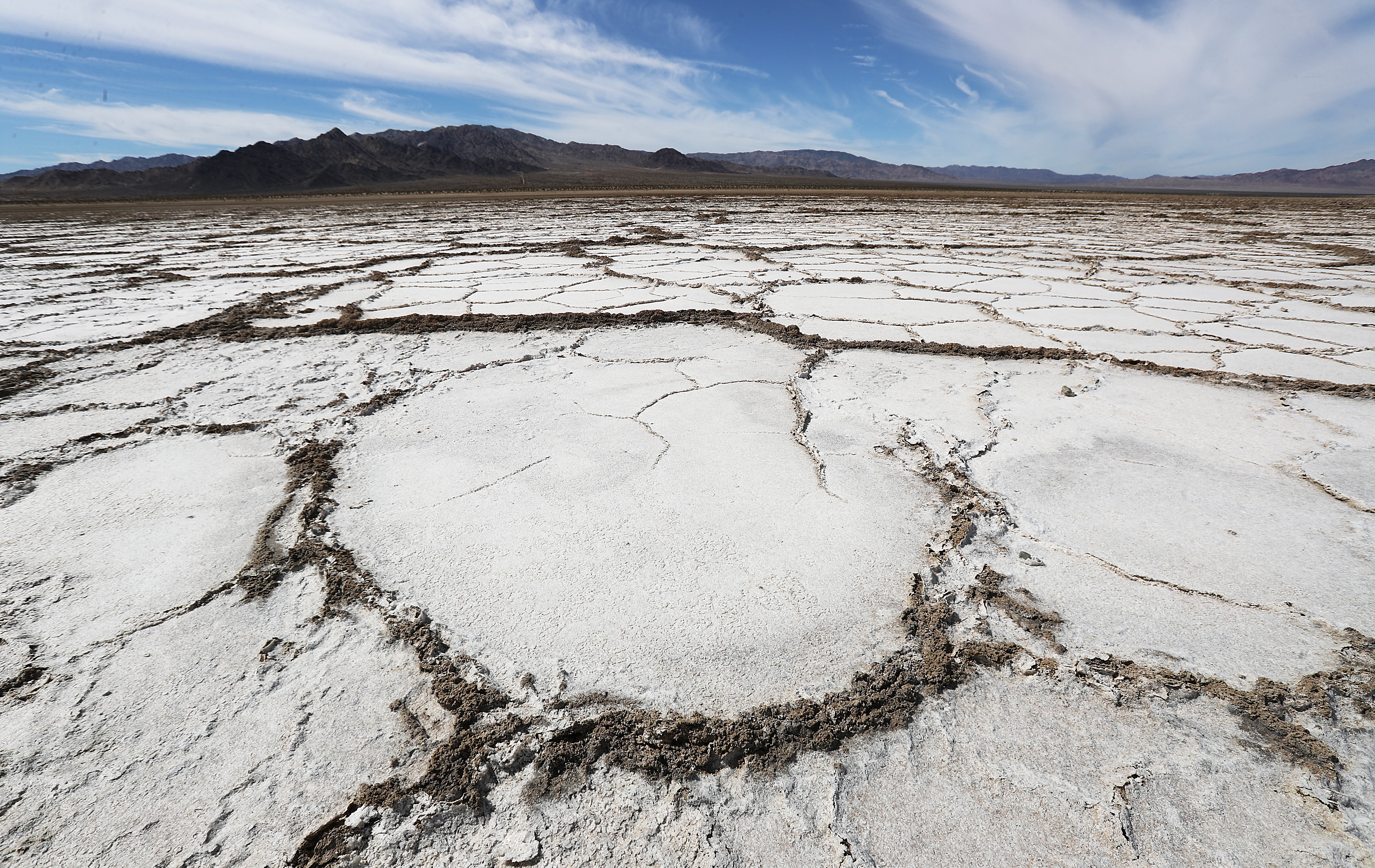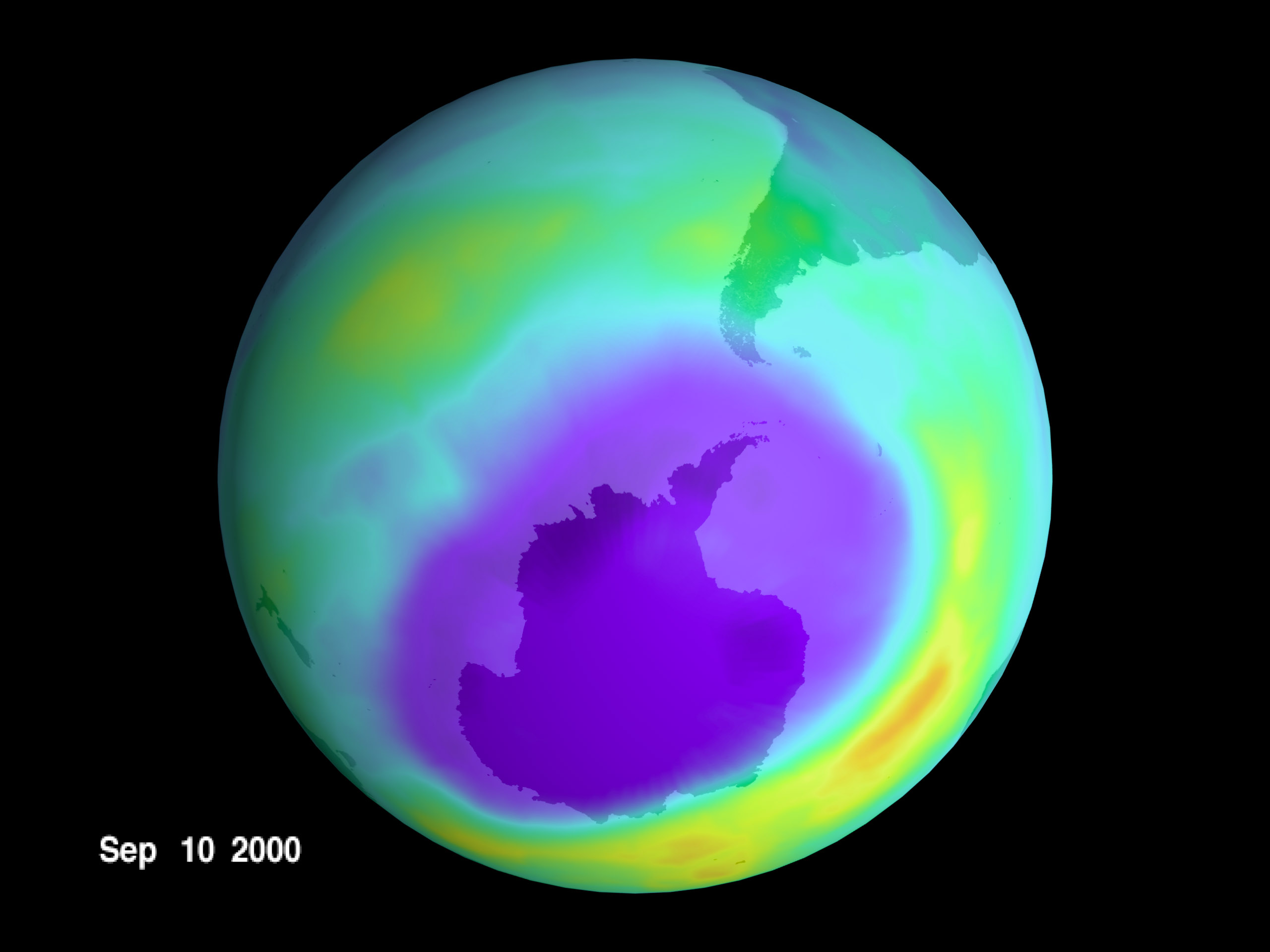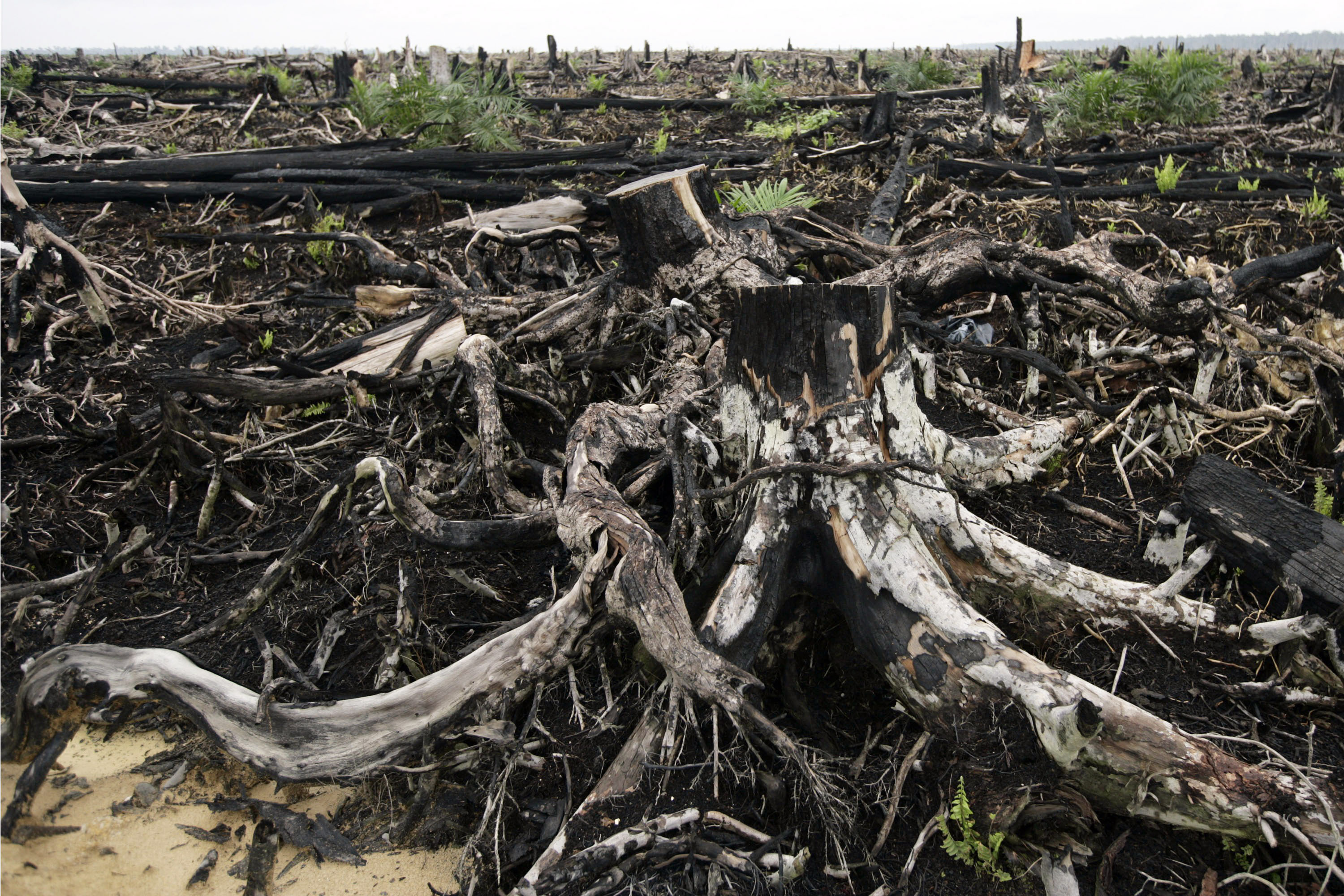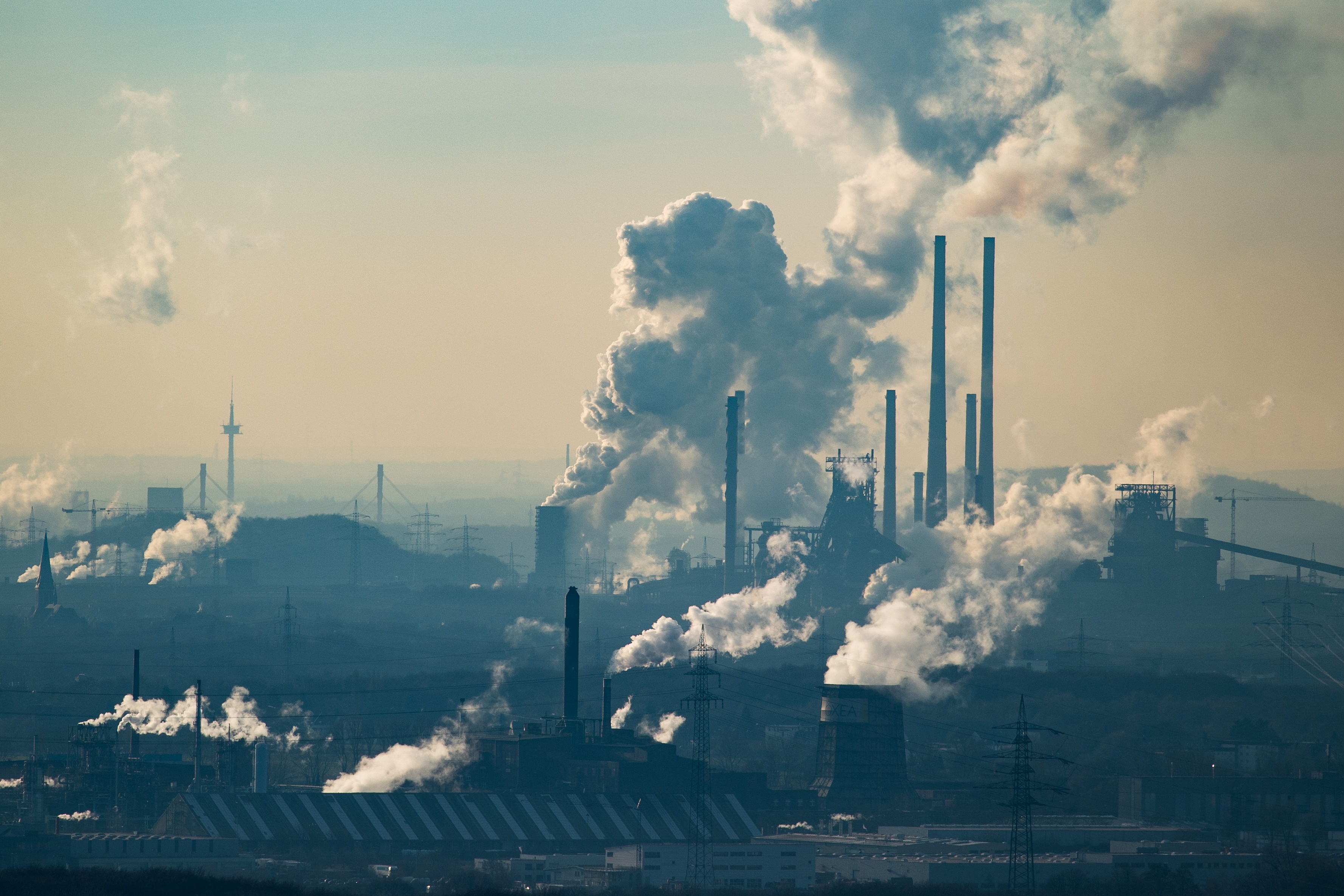This article originally appeared in SPIN’s December 1988 issue.
As the northern hemisphere enters winter, thoughts turn to the summer ahead—sunny beaches, cool oceans, an afternoon thunderstorm on the plains.
But scientists now have little doubt that the future holds none of these—that our summers will become hotter and hotter, our beaches deadly cancer zones, and our corn and wheat stunted and brown in a dust-filled “grain belt.”
The five hottest years in more than a century of measuring the average global surface temperature were 1980, 1981, 1983, 1987, and 1988. In 1980, 1983, and 1988, the United States also had its three worst droughts in more than 50 years. Economists at the Worldwatch Institute, a Washington-based research group, say that a similar drought in 1989 could result in “world catastrophe.”

Also in 1988, Hurricane Gilbert, the most violent hurricane on record, ravaged the Caribbean. At the same time, 65 million acres of crops in central China were devastated by drought, and an-other 25 million acres were lost to flooding along the Chinese coasts. Tens of thousands died from flash flooding in Kenya, Sudan, India, and coastal China. Unusually heavy storms hit Australia and New Zealand as well. Three quarters of Bangladesh were flooded, killing thousands and displacing millions.
The heat and accompanying global climate changes have convinced scientists and even politicians (although the latter usually get the facts hopelessly wrong, often to the benefit of the auto and petroleum industries) that an accumulation of heat-trapping gases, produced by industrialized societies, has brought on the long-predicted, almost science-fiction-like greenhouse effect.
Nature regulates the earth’s temperature through a daily cycle. During the day, sunlight heats up the surface of the planet and at night, much of that heat, or infrared radiation, escapes back into space.
But the greenhouse effect disrupts this process. So-called greenhouse gases, while they do not inhibit sunlight from reaching the earth, trap the infrared radiation that should go back into space and retain it near the earth’s surface, causing the planet to heat up.
The most significant greenhouse gas, although not the most potent, is carbon dioxide, which is now at levels 25 percent higher than a century ago. Carbon dioxide, which is released when anything is burned, accounts for some 50-55 percent of current and projected global warming, according to James Hansen at NASA’s Goddard Institute of Space Studies in New York. Methane (natural gas), nitrous oxide, and various trace gases account for an additional 30 percent. The remaining 15 percent, reports Hansen, is caused by chlorofluorocarbons ICFCs), a family of man-made chemicals used as refrigerants and aerosol propellants. Irving Mintzer, senior associate at the World Resources Institute, a research group in Washington, D.C., says, “the traditional CFCs are, on a per-molecule basis, 10,000 times more potent as greenhouse gases than carbon dioxide.”
Although there is agreement that the greenhouse effect is unavoidable, scientists have reached no consensus on how much or how fast global temperatures will increase. “The models we have for atmospheric movement are very inadequate,” said Karl Taylor, atmospheric physicist at Department of Energy (DOE)-funded labs of the University of California in Livermore. Taylor said recent DOE research indicated that over the next 20 to 100 years, global temperature will increase by two to ten degrees Fahrenheit.
Other models, foreseeing greater increases in the use of fossil fuels as developing nations become more industrialized, predict as much as a 30-degree increase within the next 85 years. At the height of the last Ice Age, scientists have concluded that the average global temperature dropped by only eight degrees Fahrenheit.
The most comprehensive greenhouse model to date was prepared by Hansen at the Goddard Institute and published in the August 20, 1988, issue of Journal of Geophysical Research. Hansen’s model predicts an increase of from two to five degrees Fahrenheit in the next thirty years, depending on which of three alternate futures the world’s nations choose: continued expansion of fossil fuel use at the current annual rate of 1.5 percent; a moderate cut-back; or a radical shift away from fossil fuels to alternate sources of energy, such as solar, nuclear, wind, or hydroelectric.
The warming Hansen predicts would make the planet hotter than it has been in 100,000 years—well beyond the 30,000 years of history since our species emerged. They would be enough to cause flooding of coastal cities, vast droughts almost every year in temperate regions, mass starvation, the displacement of tens of millions of people, et cetera.
These predictions are based on the current and protected world use of carbon-based—fossil—fuels. They ignore, however, factors impacting upon the planet’s vegetation, which absorbs carbon dioxide and provides us and other animals with oxygen. Scientists now fear that, because of these other factors, we have set off a “runaway greenhouse”—global warming gone out of control.
“A ‘runaway greenhouse’ comes when various environmental stresses work together to create a negative feedback situation where everything propels global warming,” explains Dr. Donald Squires, head of the Marine Sciences Institute at the University of Connecticut.

Squires and others fear that the substantial depletion of the planet’s protective layer of ozone in the upper atmosphere and the destruction of tropical rain forests for development are destroying the mechanisms for carbon dioxide-oxygen exchange, which, combined with the over-use of fossil fuels, are propelling the earth toward a runaway greenhouse condition.
“From a greenhouse point of view,” Squires says, “ours is a negative feedback society.”
While the light and heat from the sun are necessary for life, unfiltered solar, or ultraviolet (UV), radiation breaks apart the protein chains that are the basic components of all living tissue. On earth, a protective layer of ozone—the three-atom form of oxygen—in the upper atmosphere shields us from the most harmful range of UV radiation. If the ozone layer was not there, life could not have evolved here. If it were to disappear, life could not continue.
For the last several years, however, CFCs have been rapidly depleting this protective shield. Mintzer says, “When they are first released, CFCs spend anywhere from five to ten years in the lower atmosphere, where they are a very strong greenhouse gas.
“They then rise into the upper atmosphere, where they break down in the presence of ultraviolet light, releasing chlorine, which combines with oxygen to form some very reactive chemicals which catalytically destroy ozone.”
According to Carl Sagan, each molecule of chlorine from a CFC molecule destroys 100,000 ozone molecules before sinking back into the lower atmosphere.
The destructive potential of CFCs was first described in the scientific literature in 1974 in research by Dr. Sherwood Roland of the University of California at Irvine, and his colleague Mario Molina.
Models derived from Roland’s theory projected only a three to five percent loss in ozone by 2050, so the entire scientific community was shaken in 1985 when a substantial hole in the ozone layer—reduced by as much as 98 percent in some areas—appeared over Antarctica. The hole, now larger than the Antarctic continent, has continued to expand every year since.
“The hole appears most dramatically in October,” says Roland, “when the southern hemisphere is emerging from its winter.” Through November and December, he says, the hole thins out and spreads north, sending ozone-depleted air across the planet.
In 1987, as the hole began to break up, there was a sudden drop of 10 percent in the ozone layer above Melbourne, Australia. Parts of the hole have also appeared over New Zealand and parts of South America. A similar hole has begun forming over the North Pole as well, Roland says.
Scientists predict millions of new cases of skin cancer and cataracts with each percentage-point drop in the ozone layer, and recent studies show that increased ultraviolet radiation also damages the immune system. The most serious threat facing people, however, is from the threat of UV radiation to plants.
Because their primary task is to convert sunlight into stored energy, plants are extremely light-sensitive. Many will wither and die as UV radiation increases. Particularly sensitive are the microscopic plants, or phytoplankta, at the surface of the ocean. “These microorganisms,” says Mintzer, “have evolved within a very narrow range of exposure to hard ultraviolet radiation and do not have adequate defense mechanisms.”
“With a further two to three percent depletion in atmospheric ozone,” says Squires, “phytoplankta will be in real trouble.”
In addition to being the foundation of the food chain for the entire planet, phytoplankta are, says Mintzer, “absolutely crucial for the gaseous exchange between the ocean and the atmosphere.”
We are putting out an estimated 5.5 billion tons of carbon dioxide every year, according to reports from a conference on world climate changes held last summer in Toronto. Plants, which take in carbon dioxide and release oxygen, absorb about half of this. The remainder is the excess that is causing much of the global warming. Of the carbon dioxide absorbed, phytoplankta handle about half. They also provide about half of the oxygen we breathe.
According to Squires, the species of phytoplankta that are most important for this exchange are also among the most sensitive and will be among the first to die as the ozone layer is depleted. The result will be the loss of roughly one-half of the oxygen in the atmosphere and a 25-percent increase in annual levels of excess car-bon dioxide, speeding up global warming.
No one knows how rapidly the CFCs already in the atmosphere will deplete the ozone layer. Because it can take years for them to release their chlorine, Roland says that, regardless of actions taken now, chlorine levels will increase throughout the next century. Some of the hardiest CFCs will still be destroying ozone at the end of the 23rd century.
“If the phytoplankta die, that will leave only the terrestrial forests and plants to absorb carbon dioxide and provide oxygen. But, as you probably know, these are in trouble, too. Many of the forests in temperate regions are being weakened and destroyed by acid rain (formed when sulfur dioxide and nitrogen oxides from coal and petroleum mix with water vapor in clouds to produce sulfuric and nitric acid). And, depending on the extent of ozone depletion, many trees and plants, and crops in particular, will be killed by the increased ultraviolet light. The greatest threat, however, is not from some complex chemical reactions in the atmosphere, but from the direct destruction of tropical rain forests for lumber and to make room for ranchlands.

Rain forests cover only six percent of the land on the planet, but, because of their dense vegetation, they are responsible for 40 percent of worldwide carbon dioxide-oxygen exchange. Development projects sponsored primarily by the World Bank, the International Monetary Fund (IMF), and the Inter-American Development Bank are forcing the destruction of millions of acres of rain forest every year.
The World Resources Institute reported that every year between 1976 and 1980, some 42,300 square miles-27 million acres—of rain forests were destroyed, primarily in Brazil, Indonesia, and Zaire. That is roughly an area the size of Pennsylvania, every year.
And the numbers get worse. Currently, about 6,900 acres of tropical rain forests are being destroyed every hour, according to Rainforest, an environmental advocacy group in San Francisco. That’s 165,600 square miles a year, or 60.4 million acres—an area slightly larger than California. In 1987, NASA reported some 77,000 square miles lost that year in Brazil alone.
When the rain forests are taken down for timber, as is usually the case in Zaire, it is just the carbon dioxide-oxygen exchange cycle that is worsened. When they are burned to make room for grazing cattle, such as in Brazil, the fires not only take rain forest, but also contribute an estimated 10 percent to the buildup of greenhouse gases in the atmosphere, according to joint studies by U.S. and Brazilian scientists.
Half of the planet’s rain forests have already been destroyed, and, if we continue at the current rate, all the rain forests will be gone in our children’s lifetime. With them will go an estimated 300,000 to 500,000 plant and animal species, according to botanists and zoologists, and 40 percent of our oxygen supply.
As the combined effects of greenhouse gases, ozone depletion, and the destruction of rain forests get worse in coming years, it is conceivable that the planet will get so hot that all life will die and that rivers, lakes, and oceans will evaporate, leaving the planet bare and waterless, with an atmosphere of swirling gases and a surface temperature of some 600 to 800 degrees Fahrenheit. Earth would then be a lot like its sister planet, Venus.
“Runaway greenhouse is what we think happened on Venus,” says Taylor at the DOE labs in California. According to Roland, “There is no reason to believe that Venus did not at one point look very much like Earth.” Recent radar analysis shows that, beneath the thick Venutian atmosphere, there are vast, dry “ocean basins” and raised masses of land that look very much like continents.
Whatever its history, the surface of Venus is now dry. Its atmosphere, as revealed by spectrographic analyses, is composed of 97 percent carbon dioxide, with traces of nitrogen dioxide, various other gases, and water vapor, and its surface temperature is about 900 degrees Fahrenheit, in and out of the sun.
Drs. Roland, Squires, and Kellogg say that the possibility of runaway greenhouse on Earth is what they are all “very concerned about.”
Researchers hold out no hope of reversing the global warming trend, but with a radical turn-around in our use of coal, oil, and natural gas, an immediate ban on the manufacture and use of CFCs and an end to funding international development projects that require the destruction of rain forests, we might be able to prevent the planet from becoming an uninhabitable desert.
Several organizations, including the World Resources Institute and the Audubon Society, are raising funds internationally to buy large tracts of rain forests, which they will preserve as refuges.
Politicians like George Bush have touted the importance of developing natural gas and ethanol from corn as solutions to global warming. But scientists warn that, while these fuels release less carbon monoxide and nitrogen oxides, both factors in air pollution, they contribute just as much as to the greenhouse effect. They, like every other combustible fuel, put out carbon dioxide when burned. Kellogg insists that we must commit resources to rapidly develop renewable energies, such as solar, wind, hydrogen economy, and fusion.
Perhaps most troubling, however, is that global warming is becoming an issue at a time when scores of developing nations are relying ever more heavily on fossil fuels for their own industrialization. “It is unfair,” says Squires, who recently spoke at a conference on global warming where representatives of several developing nations were present. “Now that they are beginning down the course that we charted we are saying: ‘Go back to the stone age.’
“Their response is, ‘Who are you to tell us we can’t become what you have become?'”
Related:
- Fox & Friends Panel Mocks Child Climate Change Activists for Wanting to Stay Alive
- Mick Jagger Condemns Trump Administration’s Stance on Climate Change
- All the Fucked Up Things About Pitbull’s Album Climate Change





